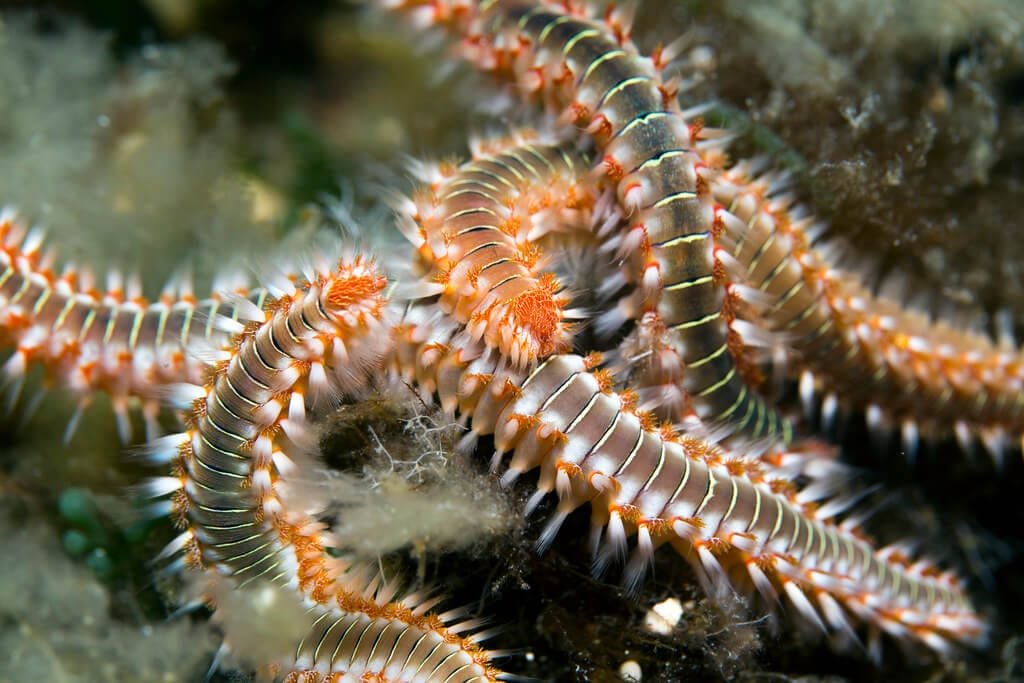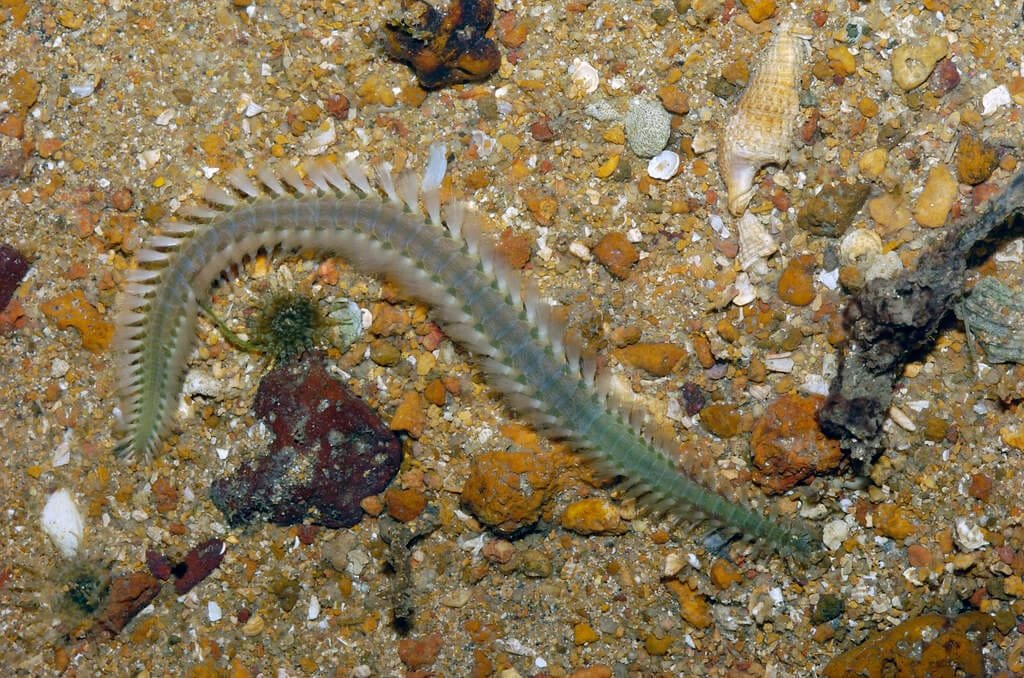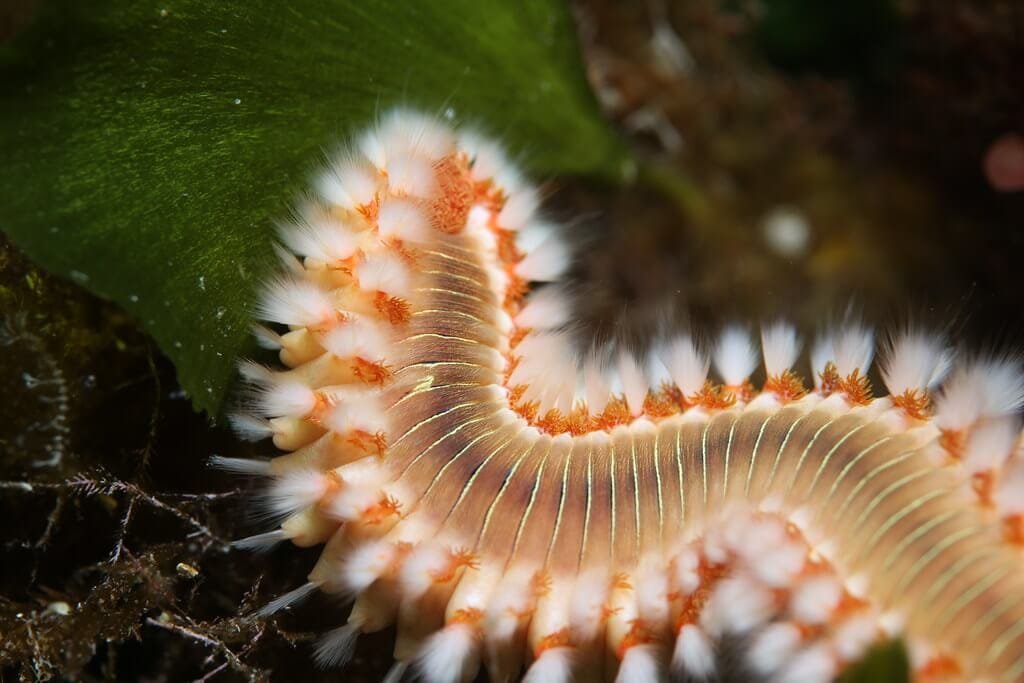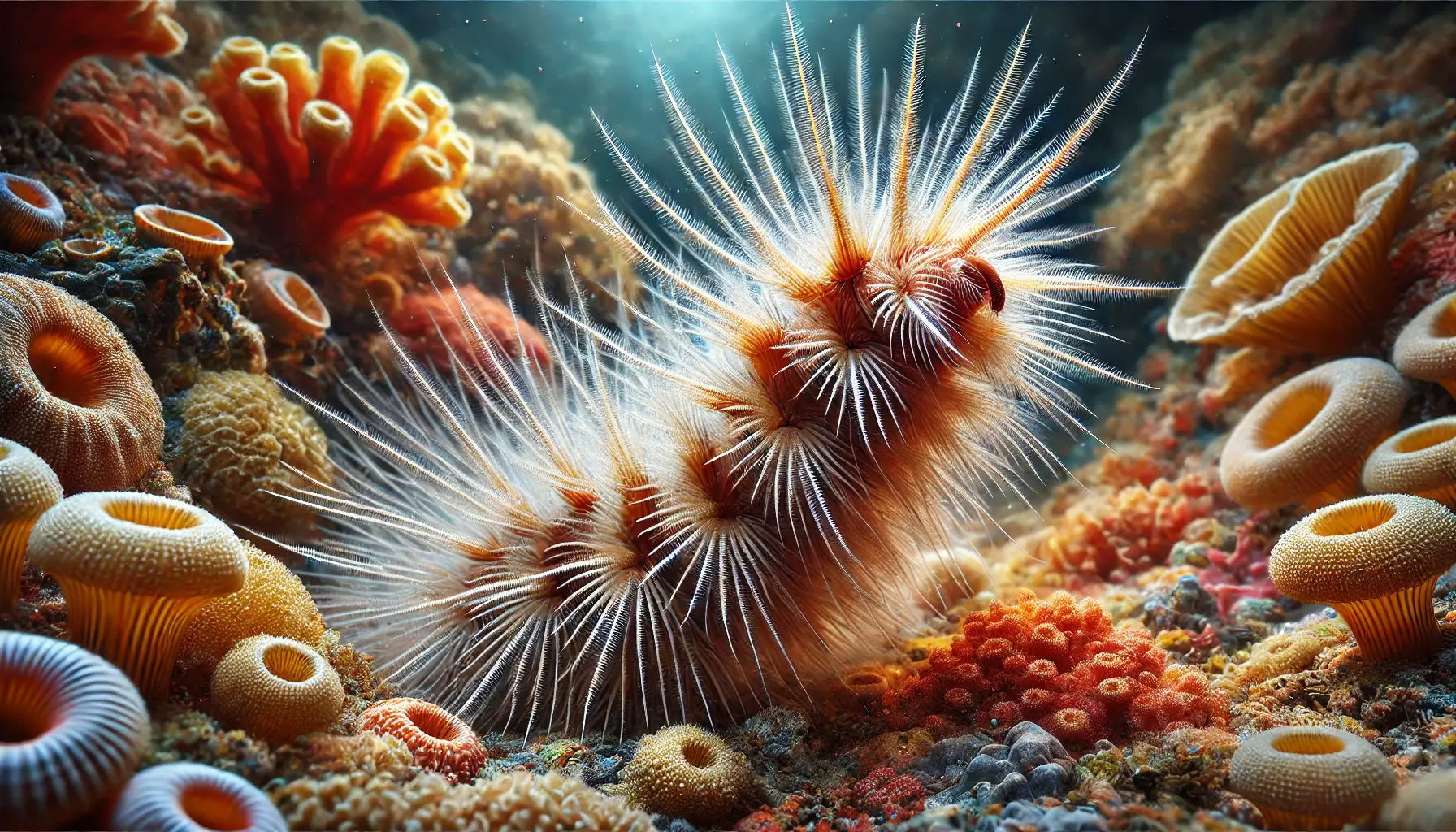The Intriguing World of Bristle Worms in Reef Aquariums
Bristle worms, often regarded with a mix of fascination and dread by reef aquarium enthusiasts, are a diverse group of polychaete worms found in marine environments around the world. While some bristle worms play beneficial roles in the ecosystem of a reef tank, others can be problematic, making it crucial for aquarists to understand their biology, behaviour, and impact on the aquarium environment. In this comprehensive guide, we will delve into the world of bristle worms, exploring their characteristics, benefits, and potential issues, as well as offering practical advice on how to manage them in your reef aquarium.
Understanding Bristle Worms
Bristle worms belong to the class Polychaeta within the phylum Annelida, which also includes earthworms and leeches. The name “polychaete” means “many bristles,” referring to the numerous chaetae (bristles) that project from their segmented bodies. These bristles are made of chitin and serve various functions, including locomotion, defence, and sensory perception.

Anatomy and Physiology
Bristle worms exhibit a range of anatomical features, but common characteristics include:
• Segmented Body: Their bodies are divided into multiple segments, each bearing a pair of parapodia, which are paddle-like appendages that help in movement and respiration.
• Bristles (Chaetae): These are located on the parapodia and can be sharp and irritating to predators and humans alike.
• Antennae and Palps: These sensory organs are located on their head, helping them navigate their environment and locate food.
Habitat and Distribution
Bristle worms are found in virtually all marine environments, from shallow coastal waters to the deep sea. In reef aquariums, they typically inhabit the substrate, live rock, and crevices, emerging at night to forage for food.
Types of Bristle Worms
Not all bristle worms are created equal. In the context of reef aquariums, they can be broadly categorised into beneficial and harmful species.
Beneficial Bristle Worms
Many bristle worms are excellent detritivores, playing a crucial role in the breakdown of organic matter and maintenance of water quality. Some common beneficial species include:

• Eurythoe complanata (Common Fireworm): Despite its intimidating name, this species is usually harmless to reef tanks and helps clean up detritus.
• Ophryotrocha species: These small, inconspicuous worms are effective scavengers and contribute to the decomposition of organic material.
Harmful Bristle Worms
Certain bristle worms can pose a threat to reef aquariums, either by preying on corals and other inhabitants or by simply becoming a nuisance due to their sheer numbers. Notable harmful species include:

• Hermodice carunculata (Bearded Fireworm): This strikingly coloured worm can inflict painful stings with its bristles and is known to feed on corals and anemones.
• Eunice species: Some large Eunice worms are predatory and can cause significant damage to reef structures and tank inhabitants.
Which Bristle Worms Are Good?
Identifying good and bad bristle worms in your reef aquarium involves close observation and knowledge of specific characteristics. Good bristle worms, such as the Common Fireworm (Eurythoe complanata) and Ophryotrocha species, are typically smaller, often less than a few inches in length, and exhibit more subdued coloration, usually shades of brown, pink, or gray. They are usually found scavenging detritus and do not exhibit aggressive behavior towards other tank inhabitants. In contrast, harmful bristle worms like the Bearded Fireworm (Hermodice carunculata) and certain Eunice species are often larger, with some reaching over a foot in length, and display more vibrant, striking colours, such as bright red, orange, or green. The Bearded Fireworm, in particular, is easily identifiable by its red and white bristles and thick body. These harmful species are more likely to be seen near or on corals, anemones, and other sessile invertebrates, often causing visible damage or stress to these organisms. Additionally, harmful bristle worms may exhibit more aggressive behaviour and are more likely to be active during the day compared to their beneficial counterparts. Regular monitoring and careful observation during feeding times or when the lights are off can help distinguish between the beneficial detritivores and the potentially destructive pests.
The Role of Bristle Worms in a Reef Aquarium
Beneficial Roles
Bristle worms can contribute positively to the health and stability of a reef aquarium in several ways:
1. Detritus Removal: By consuming dead organic matter, bristle worms help keep the substrate clean and prevent the buildup of waste products that can degrade water quality.
2. Aeration of the Substrate: As they burrow through the sand and live rock, bristle worms help aerate the substrate, promoting healthy bacterial colonies and reducing the risk of anaerobic conditions.
3. Natural Food Source: Bristle worms can serve as a food source for various fish and invertebrates, contributing to the overall food web within the aquarium.
Potential Issues
Despite their benefits, bristle worms can sometimes cause problems in reef aquariums:
1. Overpopulation: Given ample food, bristle worm populations can explode, leading to competition with other detritivores and potential harm to the tank’s aesthetic and balance.
2. Predation on Inhabitants: Certain species, especially larger or predatory bristle worms, can attack and consume corals, anemones, and even small fish and invertebrates.
3. Harm to Humans: The bristles of some worms can cause painful stings and skin irritation, making tank maintenance challenging.
Identifying Bristle Worm Infestations
Recognising the presence of bristle worms in your reef aquarium is the first step in managing their population. Signs of a bristle worm infestation include:
• Visible Worms: Spotting worms during feeding times or when the lights are off is a clear indicator.
• Damaged Corals or Anemones: Unexplained damage to corals or other tank inhabitants may suggest the presence of harmful bristle worms.
• Excess Detritus: An overabundance of detritus can support a large bristle worm population.
Managing Bristle Worms in a Reef Aquarium
Effective management of bristle worm populations involves a combination of preventive measures, biological control, and manual removal.
Preventive Measures
1. Quarantine New Additions: Always quarantine new live rock, corals, and other tank additions to prevent introducing unwanted pests.
2. Monitor Feeding: Avoid overfeeding your tank inhabitants, as excess food can support bristle worm population growth.
3. Maintain Cleanliness: Regularly clean and maintain your tank to reduce detritus accumulation.
Biological Control
Several natural predators can help keep bristle worm populations in check:
1. Wrasses: Species like the Six-Line Wrasse (Pseudocheilinus hexataenia) are known to prey on bristle worms.
2. Dottybacks: These colourful fish are effective hunters of small bristle worms.
3. Arrow Crabs: Stenorhynchus seticornis can help control bristle worm numbers, though they may also pose a threat to other tank inhabitants.
Manual Removal
For particularly stubborn infestations, manual removal may be necessary:
1. Traps: Commercial bristle worm traps are available, or you can make your own using a baited container with small holes that allow worms to enter but not escape.
2. Tweezers: During routine tank maintenance, use tweezers to remove visible bristle worms from the substrate and rockwork.
3. Light Management: Adjusting the lighting schedule to encourage worms to emerge can make them easier to spot and remove.
Case Studies: Bristle Worm Management in Practice
Case Study 1: A Balanced Ecosystem
In one reef aquarium, the introduction of a Six-Line Wrasse successfully kept bristle worm populations under control without the need for additional interventions. The tank owner also maintained strict feeding routines and regular cleaning schedules, creating a balanced ecosystem where beneficial bristle worms could thrive without becoming a nuisance.
Case Study 2: A Persistent Infestation
Another aquarist faced a severe bristle worm infestation that resulted in damaged corals and stressed fish. Despite attempts at manual removal and biological control, the population continued to grow. Ultimately, the aquarist opted to temporarily dismantle the tank, thoroughly clean all substrate and live rock, and reset the system with a strict quarantine protocol for new additions.
Conclusion
Bristle worms are a fascinating and often misunderstood group of organisms in the world of reef aquariums. While they can play beneficial roles in maintaining the health and balance of a tank, certain species can become problematic if left unchecked. By understanding their biology, identifying potential issues, and employing effective management strategies, aquarists can enjoy the benefits of bristle worms while minimising their risks. Whether through preventive measures, natural predators, or manual removal, maintaining a balanced approach to bristle worm management is key to a thriving reef aquarium.








